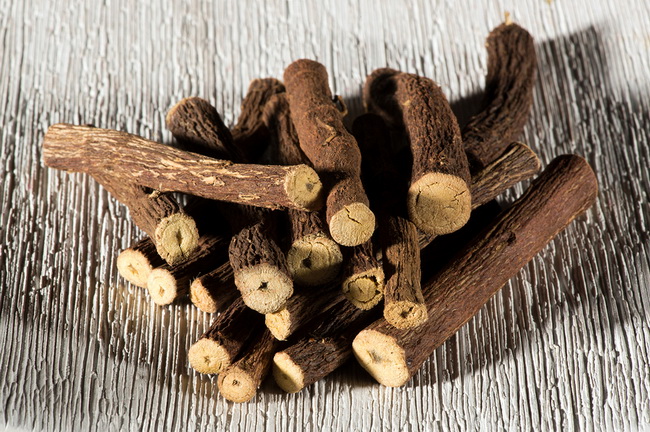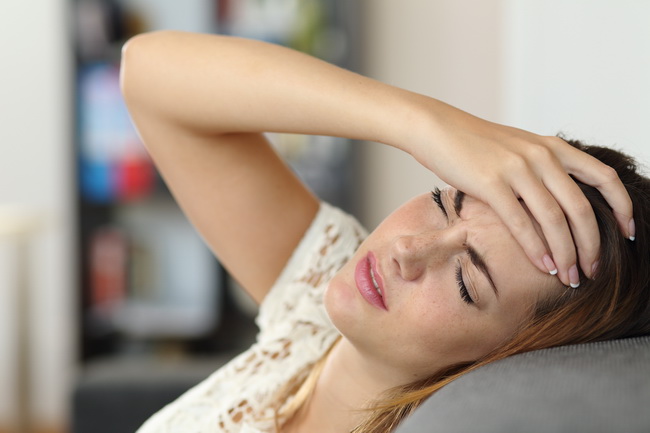- Make It Yourself Lavender Heart-Shaped Bath Bombs!
- 20 Things You Never Knew About “Down There”
- 12 Best Foods For Those Suffering From Arthritis Pain
- 12 Personal Hygiene Mistakes Almost Everyone Makes (Mom Never Told You About #4!)
- 15 Medicinal Plants And Herbs From The Cherokee People
- 12 Mind-Blowing Benefits Of Drinking Coconut Water During Pregnancy
- 12 Outstanding Winter Foods That Won’t Fatten You Up Like A Christmas Turkey
The Health Benefits Of Licorice You Have Never Heard Of!

Photo credit: bigstock.com
When most people think of licorice, they probably think of candied sweets. But did you know that for most of history, licorice was actually used for medical purposes? The ancient Greeks, Egyptians and Assyrians made use of it, and licorice was used in traditional Chinese and Ayurvedic (Indian) medicine as well. In this article, we’ll explore the health benefits of using licorice as a mild home remedy, and how to avoid unwanted side effects.
“Licorice” is the name used for the roots of the glycyrrhiza glabra plant. This plant’s name is derived from the ancient Greek words glukus and riza, literally “sweet root” (linguistically inclined readers may have guessed that “glukus” is the root word for “glucose”). While most people today associate it with Twizzlers and similar candies, the roots of the glycyrrhiza glabra plant were traditionally used to prepare special teas designed to treat a variety of gastrointestinal and respiratory conditions like asthma. The Egyptians in particular held a special reverence for this root, considering it a type of cure-all that could be used for many differing ailments.
What are the health benefits of consuming licorice?
- Licorice provides relief for gastrointestinal conditions: Licorice contains compounds like glycyrric acid which can fight harmful bacteria in the stomach. Licorice root extract can also be used to soothe pain from ulcers, upset stomach and heartburn. The root also has laxative properties that can help relieve constipation.
- Stress relief: Licorice can help relieve the adrenal glands, which can become strained from producing too much adrenaline, as well as the “stress hormone” cortisol. When taken in the proper dosages (more on that later), compounds in licorice can help the body regulate its cortisol levels.
- Licorice fights inflammation and boosts the immune system: The antioxidant properties of compounds contained in the licorice root, like glycyrrhizin, prevent inflammation and autoimmunity (where white blood cells mistake healthy tissue for hostile germs and begin attacking it). Scientific interest in licorice flavonoids has increased due to these notable anti-inflammatory and antioxidant qualities.
- Licorice helps with respiratory conditions: In the ancient medicines of India and Arabia, licorice was used as an expectorant, and the Greeks used it to treat asthma. Modern scientific scrutiny has shown they were definitely on to something. Licorice can be used to relieve bronchial spasms and clear out excess mucus in the lungs and throat. It can also help the body fight respiratory illnesses caused by viruses, such as the common cold.
- Fighting infections: Recent research, particularly studies in China, show that licorice has “broad spectrum” anti-viral properties, and could be used to supplement conventional treatment.
- Licorice helps with PMS: Licorice has estrogenic effects on the female body, and can provide a degree of relief for symptoms of premenstrual syndrome (PMS). It can also help reduce the number of hot flashes in women going through menopause.
Continue to Page 2

Photo credit: bigstock.com
How should I use licorice, and what is the proper dosage?
According to guidelines from the World Health Organization, 75 milligrams per day is the maximum amount of licorice that should be consumed per day, and licorice extract consumption should not exceed 30 milligrams daily.
Why? Too much of anything is a problem, and licorice is no exception. Excessive licorice consumption can lead to headaches, elevated blood pressure, and decreased levels of potassium in the body. Individuals who have hypertension (high blood pressure) should avoid licorice, and the Food and Drug Administration (FDA) in the United States recommends that pregnant and nursing women avoid consuming licorice.
Researchers at the University of Maryland Medical Center recommend not using licorice for any medicinal purpose for longer than four to six weeks. Licorice should not be used as a substitute for the opinion of a qualified doctor or medical professional.
Licorice is often sold in powdered form, and is usually available at health food stores. Remember to measure out the dosage properly.
Alternatively, you can purchase liquid licorice extract. (This is often how licorice flavor is added to soda, candy, and other foods.) Be sure to abide by the 30 milligram rule, as the extract is much more concentrated than the powder.
RESD ALSO: Onions: Nutritional Facts And Health Benefits Video
Finally, you can also try using “DGL,” or deglycyrrhizinated licorice. This is a licorice supplement with almost all the glycyrrhizin compound removed. This prevents many of the side effects, and dramatically lower the risk of overdosing. Be sure to follow dosage directions on the label.
References:





























